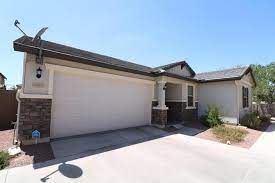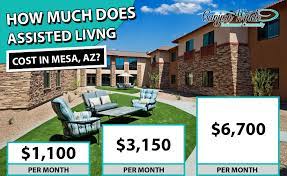Rent To Own Assisted Living Care Home Business Arizona 2

The concept of “Rent To Own Assisted Living Care Home Business Arizona ” presents a unique opportunity within the Arizona landscape. As the demand for assisted living care homes continues to rise, exploring innovative business models becomes paramount. This article delves into the intricacies of the rent-to-own approach specifically tailored to the context of assisted living care homes in Arizona. By examining market trends, regulatory considerations, financial aspects, and operational strategies, we aim to provide a comprehensive guide for entrepreneurs and investors interested in this burgeoning sector. Discover how the rent-to-own model aligns with the needs of both operators and residents, offering a promising pathway to success in the assisted living care industry.
Understanding Assisted Living Care Homes

Assisted living care homes serve as crucial establishments catering to the needs of elderly individuals who require varying levels of assistance with daily activities. Unlike nursing homes, which offer more intensive medical care, assisted living care homes focus on providing a supportive environment that promotes independence and quality of life. Residents in these facilities typically receive assistance with tasks such as medication management, meal preparation, personal hygiene, and transportation.
The primary goal of assisted living care homes is to offer a balance between independence and support, enabling residents to maintain their autonomy while receiving the necessary assistance to enhance their well-being. These facilities often provide a range of amenities and services, including recreational activities, social programs, and personalized care plans tailored to individual needs.
Assisted living care homes play a vital role in addressing the evolving needs of an aging population, providing a safe and nurturing environment where residents can thrive. As the demand for such services continues to grow, entrepreneurs and investors are increasingly exploring opportunities to enter the assisted living care industry, seeking innovative approaches to meet the needs of seniors in their communities.
In the context of Arizona, where the population of older adults is steadily increasing, the demand for assisted living care homes is expected to rise significantly in the coming years. Understanding the unique dynamics of the Arizona market and the preferences of its residents is essential for entrepreneurs seeking to establish successful assisted living care homes in the state.
Definition and Purpose: Assisted living care homes, also known as residential care facilities or adult care homes, provide a range of services designed to meet the unique needs of elderly individuals. These services may include assistance with activities of daily living (ADLs) such as bathing, dressing, grooming, medication management, and mobility support. Additionally, residents often have access to nutritious meals, recreational activities, social engagement opportunities, and transportation services.
Unlike traditional nursing homes, which focus primarily on medical care and supervision, assisted living care homes emphasize a more homelike environment where residents can maintain a sense of independence and autonomy. The goal is to create a supportive community that fosters social connections, meaningful engagement, and overall well-being among residents.
Key Features and Services: Assisted living care homes offer a range of amenities and services tailored to the needs and preferences of their residents. These may include:
- 24-hour supervision and assistance with ADLs
- Medication management and administration
- Nutritious meals and snacks prepared according to dietary requirements
- Housekeeping and laundry services
- Personalized care plans tailored to individual needs and preferences
- Recreational and social activities, including outings and group events
- Transportation assistance for medical appointments, shopping, and other outings
- Access to healthcare services and coordination of medical care as needed
- Assistance with coordinating home health services or therapy sessions, if necessary
The design and layout of assisted living care homes often reflect a residential-style setting, with private or semi-private rooms, communal living areas, dining spaces, outdoor gardens, and recreational amenities. Many facilities strive to create a warm and inviting atmosphere that feels like home while ensuring accessibility and safety for residents with mobility limitations or other health concerns.
Philosophy of Care: Central to the philosophy of assisted living care homes is the promotion of resident autonomy, dignity, and choice. Providers emphasize person-centered care approaches that prioritize the individual preferences, values, and goals of each resident. Care plans are developed collaboratively with residents and their families to ensure that services align with their evolving needs and preferences over time.
Market Analysis in Arizona for Rent To Own Assisted Living Care Home Business Arizona
The market for assisted living care homes in Arizona is influenced by several key factors, including demographic trends, regulatory environment, consumer preferences, and economic considerations. Understanding these dynamics is essential for entrepreneurs and investors looking to enter or expand within the assisted living care industry in the state.
Demographic Trends: Arizona is experiencing significant demographic shifts driven by population growth, aging baby boomers, and increased life expectancy. According to the U.S. Census Bureau, the state’s population has been steadily increasing, with a growing proportion of residents aged 65 and older. This aging population trend is expected to continue in the coming decades, driving demand for senior housing and long-term care services, including assisted living care homes.
Demand for Assisted Living Care Homes: The demand for assisted living care homes in Arizona is driven by several factors, including:
- Aging population: As the baby boomer generation enters retirement age, the demand for senior housing and supportive services is expected to rise.
- Preference for community-based care: Many older adults prefer to age in place within their communities, seeking alternatives to traditional nursing home care that offer greater independence and autonomy.
- Increasing prevalence of chronic conditions: As individuals age, the likelihood of developing chronic health conditions or disabilities increases, leading to a greater need for supportive services and assistance with daily activities.
- Family dynamics: Changes in family structures and caregiving patterns may result in greater reliance on assisted living care homes as a viable option for older adults who require additional support beyond what family members can provide.
Competitive Landscape: The assisted living care industry in Arizona is characterized by a diverse mix of providers, including large national chains, smaller regional operators, nonprofit organizations, and independent facilities. Competition within the market is driven by factors such as location, quality of care, reputation, amenities, and pricing.
While larger providers may have economies of scale and brand recognition, smaller operators may differentiate themselves by offering more personalized care, specialized services, or unique amenities tailored to specific demographic or cultural preferences within their target market.
Regulatory Environment: Assisted living care homes in Arizona are subject to state regulations designed to ensure the safety, quality, and well-being of residents. Licensing requirements, staffing ratios, health and safety standards, resident rights protections, and operational guidelines are established and enforced by the Arizona Department of Health Services (ADHS) through the Division of Licensing Services.
Compliance with regulatory requirements is essential for operators to maintain licensure and demonstrate accountability for the care and services provided to residents. Additionally, adherence to industry best practices and ethical standards can enhance reputation, build trust with residents and families, and mitigate legal and financial risks associated with noncompliance.
Rent-to-Own Model Explained

The rent-to-own model offers a unique approach to acquiring and operating assisted living care homes, providing both operators and residents with distinct advantages and considerations. In the context of the assisted living care industry in Arizona, understanding the fundamentals of the rent-to-own model is essential for entrepreneurs and investors evaluating alternative business strategies.
Overview of the Rent-to-Own Concept: In a traditional rent-to-own arrangement, a tenant agrees to rent a property for a specified period with the option to purchase the property at a predetermined price within a specified timeframe. This model allows tenants to occupy and utilize the property while building equity and evaluating the suitability of the property for their long-term needs.
In the context of assisted living care homes, the rent-to-own model extends beyond mere property acquisition to encompass the entire business operation. Operators enter into agreements with property owners or developers to lease or lease-purchase facilities that can be converted into assisted living care homes. This arrangement enables operators to establish and operate care facilities without the immediate need for substantial capital investment in property acquisition.
Benefits for Operators: For operators, the rent-to-own model offers several advantages, including:
- Reduced upfront costs: By leasing or lease-purchasing facilities, operators can conserve capital and allocate resources toward operational expenses, staffing, and resident care services.
- Flexibility and scalability: Rent-to-own agreements provide operators with flexibility to expand or adjust their operations based on market demand, without the constraints of property ownership or long-term debt obligations.
- Risk mitigation: Leasing arrangements may offer greater protection against fluctuations in property values, market conditions, and regulatory changes compared to outright property ownership.
- Opportunity for equity accumulation: Lease-purchase agreements may enable operators to gradually build equity in the property over time, with the option to exercise the purchase option and secure ownership rights at a later date.
Considerations for Residents: From the perspective of residents and their families, the rent-to-own model may offer certain benefits and considerations, including:
- Stability and continuity of care: Residents can benefit from knowing that the care facility they reside in is likely to remain operational and under consistent management, regardless of changes in property ownership.
- Potential for long-term residency: Rent-to-own arrangements may provide residents with the opportunity to establish roots in a community and remain in a familiar environment for an extended period, fostering social connections and a sense of belonging.
- Financial implications: Residents should carefully consider the financial implications of residing in a rent-to-own care home, including rental rates, purchase options, and potential changes in ownership that may impact their housing stability and financial security.
Legal and Regulatory Considerations
Establishing and operating an assisted living care home in Arizona entails navigating a complex landscape of legal and regulatory requirements aimed at ensuring the safety, well-being, and rights of residents. Understanding and complying with these regulations is essential for operators to maintain licensure, uphold quality standards, and mitigate legal and financial risks.
Licensing and Certification: Assisted living care homes in Arizona are subject to licensure and oversight by the Arizona Department of Health Services (ADHS) through the Division of Licensing Services. Operators must adhere to specific licensing requirements, which may include:
- Facility size and capacity limitations
- Health and safety standards for physical environment and accommodations
- Staffing ratios and qualifications for caregivers and administrators
- Resident rights protections and grievance procedures
- Medication management protocols and recordkeeping requirements
Obtaining and maintaining licensure requires operators to submit applications, undergo inspections, and demonstrate compliance with regulatory standards. Failure to comply with licensing requirements may result in fines, penalties, or revocation of licensure, jeopardizing the viability and reputation of the care home.
Legal Structure and Liability Protection: Choosing the appropriate legal structure for an assisted living care home is crucial for managing liability, protecting assets, and ensuring compliance with tax obligations. Common legal structures include sole proprietorships, partnerships, limited liability companies (LLCs), and corporations.
Each legal structure offers distinct advantages and considerations in terms of liability protection, tax treatment, governance, and operational flexibility. Operators should consult with legal and financial advisors to determine the most suitable structure based on their specific needs, goals, and risk tolerance.
Resident Rights and Protections: Assisted living care homes in Arizona are required to uphold the rights and dignity of residents, as outlined in state and federal regulations. Residents have the right to:
- Receive respectful and dignified treatment
- Participate in decisions regarding their care and services
- Privacy and confidentiality of personal information and medical records
- Voice grievances and concerns without fear of retaliation
- Access to quality care, services, and accommodations
Operators are responsible for developing policies and procedures that promote resident rights and ensure compliance with applicable laws and regulations. Effective communication, transparent practices, and resident-centered care approaches are essential for fostering trust and accountability within the care home community.
Risk Management and Compliance: Assisted living care homes must implement robust risk management strategies to identify, mitigate, and respond to potential risks and liabilities. This may include:
- Implementing safety protocols and emergency preparedness plans
- Conducting regular staff training and competency assessments
- Maintaining accurate and up-to-date documentation of resident care and services
- Collaborating with healthcare professionals and community resources to address complex care needs
- Monitoring and addressing compliance issues identified through internal audits or regulatory inspections
By proactively addressing risks and compliance challenges, operators can enhance the safety, quality, and reputation of their assisted living care homes while safeguarding the well-being of residents and staff members.
Financial Viability and Planning

The financial aspects of establishing and operating an assisted living care home in Arizona are critical considerations for entrepreneurs and investors. A thorough understanding of the financial landscape, budgeting strategies, funding options, and potential return on investment is essential for success in this competitive and dynamic industry.
Initial Investment and Startup Costs: Establishing an assisted living care home requires a significant initial investment to cover expenses such as:
- Property acquisition or lease costs
- Facility renovations, upgrades, and furnishings
- Licensing and regulatory compliance fees
- Staff recruitment and training expenses
- Equipment and supplies for resident care and operations
- Marketing and promotional efforts to attract residents and families
Operators should conduct a comprehensive financial analysis to estimate startup costs accurately and develop a realistic budget that aligns with their business goals and objectives.
Operating Expenses and Revenue Streams: Assisted living care homes incur ongoing operating expenses related to facility maintenance, staffing, utilities, insurance, food service, medical supplies, and administrative overhead. Operators must carefully manage expenses while ensuring the delivery of high-quality care services and maintaining regulatory compliance.
Revenue streams for assisted living care homes typically include:
- Monthly resident fees: Residents pay a monthly fee for room and board, as well as access to care services and amenities.
- Additional services: Operators may generate additional revenue by offering ancillary services such as transportation, medication management, therapy, and specialized care programs.
- Private pay and third-party reimbursements: Residents may pay privately for care services, or operators may contract with Medicaid, long-term care insurance, or other third-party payers to reimburse for eligible services.
Operators should develop pricing structures and service packages that balance affordability for residents with the financial sustainability of the care home.
Financial Projections and Return on Investment: Conducting financial projections and forecasting cash flow, expenses, and revenue is essential for assessing the long-term viability and profitability of an assisted living care home venture. Operators should consider factors such as occupancy rates, market demand, competition, regulatory changes, and economic trends when developing financial projections.
Return on investment (ROI) analysis allows operators and investors to evaluate the potential financial returns and risks associated with investing in an assisted living care home. ROI calculations should account for both short-term and long-term financial outcomes, including net income, cash flow, equity accumulation, and resale value of the property or business.
Funding Options and Capital Sources: Securing adequate funding is a critical aspect of launching and sustaining an assisted living care home operation. Funding options may include:
- Equity investment: Investors may provide equity capital in exchange for ownership stakes in the business, sharing in the risks and rewards of the venture.
- Debt financing: Operators can obtain loans or lines of credit from banks, credit unions, or private lenders to finance startup costs or expansion projects.
- Government grants and incentives: Some government agencies, nonprofit organizations, or community development programs may offer grants, tax incentives, or low-interest loans to support the development of senior housing and care facilities.
- Public-private partnerships: Operators may explore partnerships with local governments, healthcare systems, or nonprofit organizations to access funding, resources, and collaborative opportunities.
Operators should evaluate funding options carefully, considering factors such as interest rates, repayment terms, collateral requirements, and impact on ownership and control of the business.
Rent To Own Assisted Living Care Home Business Arizona Conclusion
In conclusion, the journey of establishing and operating a “Rent To Own Assisted Living Care Home Business” in Arizona is multifaceted and nuanced, requiring a thorough understanding of market dynamics, regulatory requirements, financial considerations, and operational strategies.
By delving into the intricacies of the assisted living care industry and the rent-to-own business model, entrepreneurs and investors can uncover unique opportunities to meet the evolving needs of older adults in the state.
From market analysis and legal compliance to financial planning and resident-centered care, each aspect of the venture plays a pivotal role in shaping the success and sustainability of assisted living care homes.
By embracing innovation, collaboration, and a commitment to excellence in care delivery, stakeholders can contribute to the creation of supportive, vibrant communities where seniors can thrive and age with dignity in Arizona’s diverse landscape.


